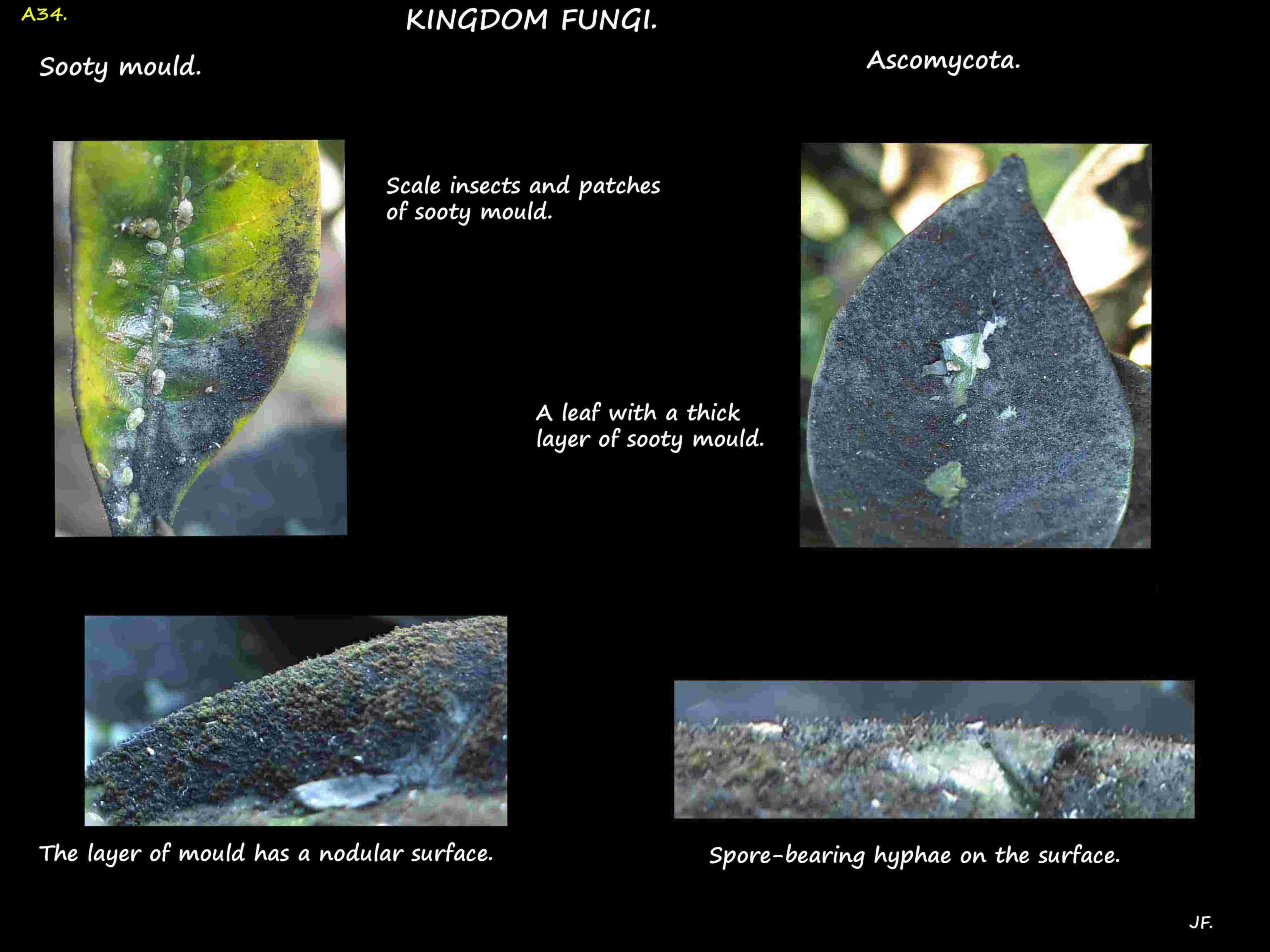Sooty mould.
Sooty mould grows on plants such as azaleas and camellias but also objects like fences and stones.
It is caused by fungi belonging to at least half a dozen Ascomycota genera.
A plant is susceptible to infection if it is infested by sap sucking pests such as aphids, scale insects,
mealy bugs or whiteflies that produce honeydew.
Occasionally a plant itself produces a sugary exudate.
Sooty mould appears as black or dark brown areas of fungal growth usually on the upper surface of leaves.
It may be a thin dusting or a thick layer that cracks and peels off.
Spores of all species are dark.
Sooty moulds cause little harm to the plant and is mainly a cosmetic problem.
If there is a thick layer of fungus it may reduce photosynthesis due to lack of sunlight.
J.F.


